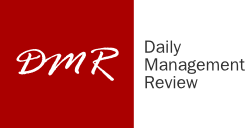Investor anxiety has surged in recent weeks as a string of unexpected policy moves and external shocks throw long‑standing monetary roadmaps into disarray. From surprise rate cuts in Europe to sudden spikes in geopolitical tension, central bankers find themselves reacting in real time to events rather than guiding markets along a clear, model‑driven path. Against a backdrop of U.S. tariff brinkmanship, Middle Eastern conflict and erratic currency swings, traditional forecasting gauges have been rendered all but obsolete.
Tariff Turbulence and Trade‑War Fallout
The White House’s aggressive stance on import duties has become a defining source of uncertainty for policymakers and businesses alike. Plans to impose steep levies—potentially as high as 50 percent—on goods from major trading partners have been floated repeatedly, only to be delayed or partially rolled back amid market volatility. Each tariff announcement reshapes corporate cost projections, forcing firms to reconsider supply‑chain strategies and investment plans.
Consumers feel the impact too. Higher duties on electronics, machinery and everyday staples threaten to keep inflation elevated even if central banks attempt to ease policy. Where once the Federal Reserve projected a smooth path to lower rates, it now maintains a cautious “wait‑and‑see” stance, postponing cuts until trade outcomes become clearer. In turn, this pause delays relief for mortgage‑holders and businesses looking to refinance, further amplifying market unease.
Analysts note that the mere anticipation of tariffs has ripple effects. Commodity prices rise on fears of supply restrictions, and import‑reliant manufacturers warn of squeezed margins. As a result, the very premise of pre‑announced rate cuts has fractured: central banks must remain nimble, ready to tighten or loosen policy at a moment’s notice based on evolving trade developments.
Currency Shifts and Geopolitical Risks
Beyond trade, currency markets have morphed into unpredictable arenas of their own. The U.S. dollar, long considered a safe‑haven benchmark, has swung wildly—first depreciating sharply against major peers, then rallying on renewed fears of conflict in the Middle East. Each fluctuation feeds back into inflation expectations: a weaker dollar lifts import costs, while a stronger greenback can steel the resolve of exporters and weigh on global growth.
Oil prices add another layer of complexity. Brent crude has oscillated in response to flare‑ups between Israel and Iran, as well as concerns over potential disruptions to shipping through crucial chokepoints. Energy‑importing nations face the dual challenge of containing headline inflation while cushioning consumers against volatile fuel bills. Central banks in Europe and Asia now must account for erratic oil swings when calibrating interest rates.
Meanwhile, safe‑haven flows have pushed up valuations of traditional refuges. The Swiss franc soared as investors sought stability, prompting the Swiss National Bank to cut its policy rate back to zero in a bid to counter deflationary pressures. Norway’s central bank, grappling with an overly strong krone—seen as a “runaway” currency amid trade‑war jitters—also surprised markets by trimming rates. These moves underscore a fracturing of what once appeared to be a unified global tightening cycle: regional central banks now diverge sharply based on local economic and currency conditions.
Central Bank Surprises and Shifting Projections
In this environment, even the much‑watched “dot plots” that once offered a glimpse into future rate paths have lost their magic. Policymakers openly admit they lack conviction on where rates will head next, signaling a readiness to pivot as headline risks mount. At the Fed, a rising number of officials foresee no rate cuts this year, in stark contrast to just a few dissenters not long ago.
Markets have responded with higher volatility expectations. Equity investors, once lulled by steady central‑bank messaging, now brace for sudden policy reversals that can erase weeks of gains in a single session. Bond traders, too, find it hard to price out long‑term yields when the only certainty is uncertainty itself.
Economists argue that three overlapping forces have upended the central‑bank playbook: geopolitical flashpoints that drive risk aversion; trade‑policy volatility that feeds into inflation and growth forecasts; and a crowding of capital into ever‑shifting safe havens and yield‑seeking assets. The upshot is an era in which central banks can no longer lean on clean, model‑based guidance alone—they must react promptly to headline events and manage market expectations in a far more fluid landscape than before.
As investors and businesses try to chart a course, one lesson stands out: in today’s world, no rate path is guaranteed, and policy roadmaps can be torn up overnight by tariffs, wars or currency shocks. In this new reality, adaptability has become the central bank’s most important tool.
(Source:www.forexfactory.com)
Tariff Turbulence and Trade‑War Fallout
The White House’s aggressive stance on import duties has become a defining source of uncertainty for policymakers and businesses alike. Plans to impose steep levies—potentially as high as 50 percent—on goods from major trading partners have been floated repeatedly, only to be delayed or partially rolled back amid market volatility. Each tariff announcement reshapes corporate cost projections, forcing firms to reconsider supply‑chain strategies and investment plans.
Consumers feel the impact too. Higher duties on electronics, machinery and everyday staples threaten to keep inflation elevated even if central banks attempt to ease policy. Where once the Federal Reserve projected a smooth path to lower rates, it now maintains a cautious “wait‑and‑see” stance, postponing cuts until trade outcomes become clearer. In turn, this pause delays relief for mortgage‑holders and businesses looking to refinance, further amplifying market unease.
Analysts note that the mere anticipation of tariffs has ripple effects. Commodity prices rise on fears of supply restrictions, and import‑reliant manufacturers warn of squeezed margins. As a result, the very premise of pre‑announced rate cuts has fractured: central banks must remain nimble, ready to tighten or loosen policy at a moment’s notice based on evolving trade developments.
Currency Shifts and Geopolitical Risks
Beyond trade, currency markets have morphed into unpredictable arenas of their own. The U.S. dollar, long considered a safe‑haven benchmark, has swung wildly—first depreciating sharply against major peers, then rallying on renewed fears of conflict in the Middle East. Each fluctuation feeds back into inflation expectations: a weaker dollar lifts import costs, while a stronger greenback can steel the resolve of exporters and weigh on global growth.
Oil prices add another layer of complexity. Brent crude has oscillated in response to flare‑ups between Israel and Iran, as well as concerns over potential disruptions to shipping through crucial chokepoints. Energy‑importing nations face the dual challenge of containing headline inflation while cushioning consumers against volatile fuel bills. Central banks in Europe and Asia now must account for erratic oil swings when calibrating interest rates.
Meanwhile, safe‑haven flows have pushed up valuations of traditional refuges. The Swiss franc soared as investors sought stability, prompting the Swiss National Bank to cut its policy rate back to zero in a bid to counter deflationary pressures. Norway’s central bank, grappling with an overly strong krone—seen as a “runaway” currency amid trade‑war jitters—also surprised markets by trimming rates. These moves underscore a fracturing of what once appeared to be a unified global tightening cycle: regional central banks now diverge sharply based on local economic and currency conditions.
Central Bank Surprises and Shifting Projections
In this environment, even the much‑watched “dot plots” that once offered a glimpse into future rate paths have lost their magic. Policymakers openly admit they lack conviction on where rates will head next, signaling a readiness to pivot as headline risks mount. At the Fed, a rising number of officials foresee no rate cuts this year, in stark contrast to just a few dissenters not long ago.
Markets have responded with higher volatility expectations. Equity investors, once lulled by steady central‑bank messaging, now brace for sudden policy reversals that can erase weeks of gains in a single session. Bond traders, too, find it hard to price out long‑term yields when the only certainty is uncertainty itself.
Economists argue that three overlapping forces have upended the central‑bank playbook: geopolitical flashpoints that drive risk aversion; trade‑policy volatility that feeds into inflation and growth forecasts; and a crowding of capital into ever‑shifting safe havens and yield‑seeking assets. The upshot is an era in which central banks can no longer lean on clean, model‑based guidance alone—they must react promptly to headline events and manage market expectations in a far more fluid landscape than before.
As investors and businesses try to chart a course, one lesson stands out: in today’s world, no rate path is guaranteed, and policy roadmaps can be torn up overnight by tariffs, wars or currency shocks. In this new reality, adaptability has become the central bank’s most important tool.
(Source:www.forexfactory.com)






